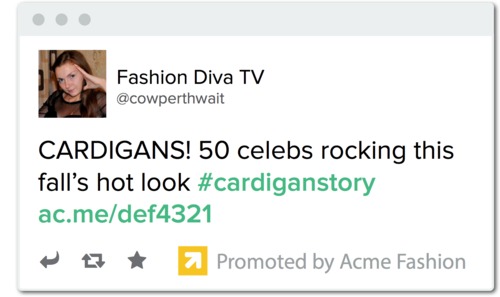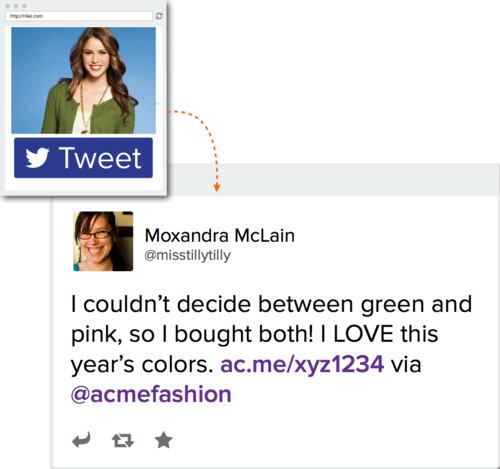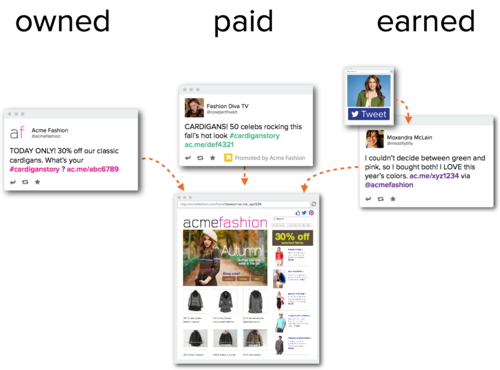Current State of Mobile Consumption
It’s 2PM on a Monday afternoon. How many times have you checked your phone today? Mobile consumption has reached an all-time high. In fact, people keep their smartphones with them all but 2 hours of the day1! Talk about separation anxiety. But you may be wondering, how exactly are people consuming this information on their phones?
86% of time spent on mobile is spent within a mobile app2. Mobile applications have taken center stage as the go-to source of how people of all ages consume information and communicate with the world around them. So what does this mean for advertisers? It’s a chance for marketers to reach their audience outside of the Facebook Feed while still leveraging the benefits of Facebook Targeting.
So what is the Audience Network?

Facebook created a way for brands to extend their campaigns beyond the Facebook News Feed and into the mobile app experience. With the Audience network, brands will have access to a network of over 400 applications where they can take advantage of the mass reach and powerful targeting on Facebook.
Q&A
Here are the 5 questions you should ask when considering if the Audience Network is the right solution for you:
 1) What strategies are supported by the Audience Network?
1) What strategies are supported by the Audience Network?
The Audience Network is designed to drive key business objectives, including mobile app installs and app engagement. Facebook has plans to open this up to more marketing objectives in the future.
 2) What kind of creative and specs do I need to use?
2) What kind of creative and specs do I need to use?
Conveniently, brands won’t need to upload new creative for ads in the Audience Network. The same assets used in the News Feed can also be used for the network.
 3) What kind of targeting is available for the Audience Network?
3) What kind of targeting is available for the Audience Network?
All targeting available on Facebook is also available on the Audience Network. Talk about icing on the cake!
 4) What kind of data can I collect with the Audience Network?
4) What kind of data can I collect with the Audience Network?
Advertisers can measure app engagements, conversions, demographic information and more if the app they are promoting is integrated with Facebook’s SDK, a toolkit for software developers that incorporates Facebook into their app. The results can also be broken out separately to show performance on News Feed vs. Audience Network.
![]() 5) What kind of apps are in the network?
5) What kind of apps are in the network?
Facebook is currently using a blind network of 400 apps, although we do know that Facebook has partnerships with some of the top apps in ecommerce, gaming, utility, and publishing.
We are eager to see the success brands will have with this new mobile network currently available for all advertisers. If your brand wants to extend their Facebook campaign into new mobile inventory with the power of Facebook targeting, then the Audience Network is definitely the right solution for you!
1 IDC Always Connected Report, May 2013
2 Flurry Blog April 2014



 UNIFIED recently partnered with one of the world’s largest Quick Serve Restaurant chains to track the success of their FIFA World Cup Video content across 53 different countries. Through our Business Intelligence team we were able to track every piece of video content posted on each local page and report on it using Facebook’s enhanced video metrics, also rolling the results up to regional and global levels. The reports enabled the client to better understand how the content resonated within each region and which were the most cost efficient countries and regions to reach for this global initiative.
UNIFIED recently partnered with one of the world’s largest Quick Serve Restaurant chains to track the success of their FIFA World Cup Video content across 53 different countries. Through our Business Intelligence team we were able to track every piece of video content posted on each local page and report on it using Facebook’s enhanced video metrics, also rolling the results up to regional and global levels. The reports enabled the client to better understand how the content resonated within each region and which were the most cost efficient countries and regions to reach for this global initiative.
 In the past, targeting people according to ethnicity was executed mainly through broadcast television networks – via channels like Univision and Telemundo – where advertisers were able to reach a Hispanic audience at scale.
In the past, targeting people according to ethnicity was executed mainly through broadcast television networks – via channels like Univision and Telemundo – where advertisers were able to reach a Hispanic audience at scale.
 Make sure you’re “speaking” to your audience in their language of choice. Use only Spanish copy for your Spanish Dominant audience and considering testing a combination of the English and Spanish – or unique variations of each – for your Bilingual segment.
Make sure you’re “speaking” to your audience in their language of choice. Use only Spanish copy for your Spanish Dominant audience and considering testing a combination of the English and Spanish – or unique variations of each – for your Bilingual segment. By focusing on these life-changing moments you can reach your audience when they are in the right frame of mind to make a purchase.
By focusing on these life-changing moments you can reach your audience when they are in the right frame of mind to make a purchase.







Recent Comments